My usual routine for new trees in the garden is simple – keep the trees as healthy as possible until repotting season. When I repot a tree, I can get an idea of what the roots look like and better understand how the tree might respond to bonsai work.
A few weeks ago, I brought a Chinese wisteria into the garden that challenged this approach. After just seven days on the bench, the tree had produced new shoots 28 inches long. Clearly, the tree was strong enough for some work.
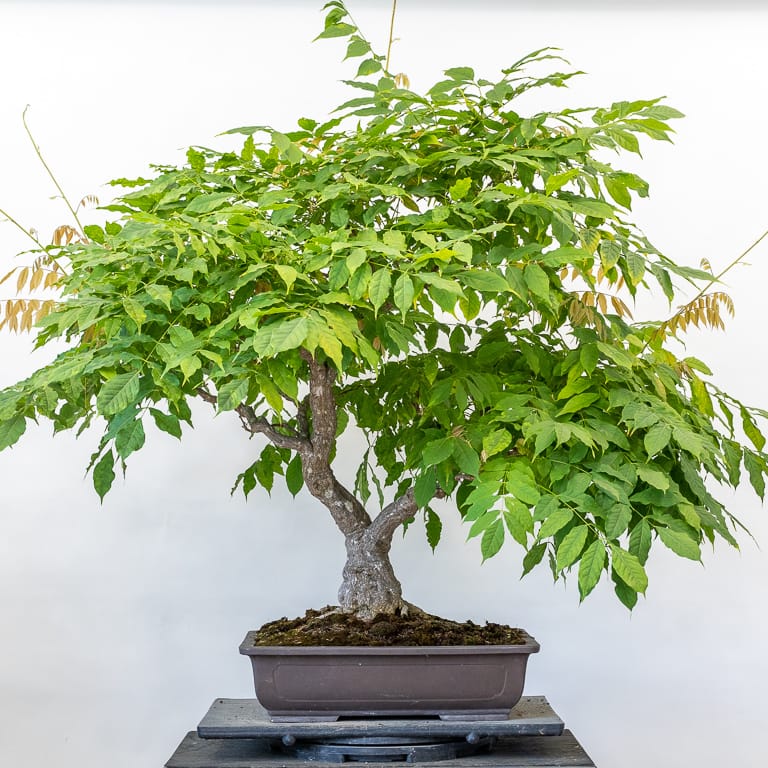
Healthy Chinese wisteria
I had been appreciating the new bronze-colored leaves that grew among the pale green mature foliage as it offered a nice contrast of colors for a summer bonsai out of bloom.
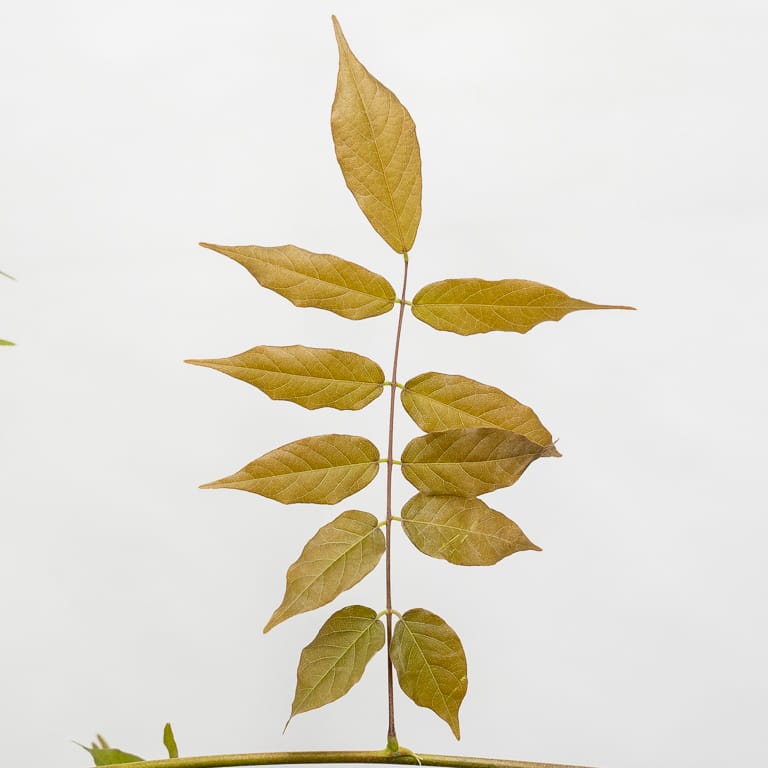
New leaf with bronze color
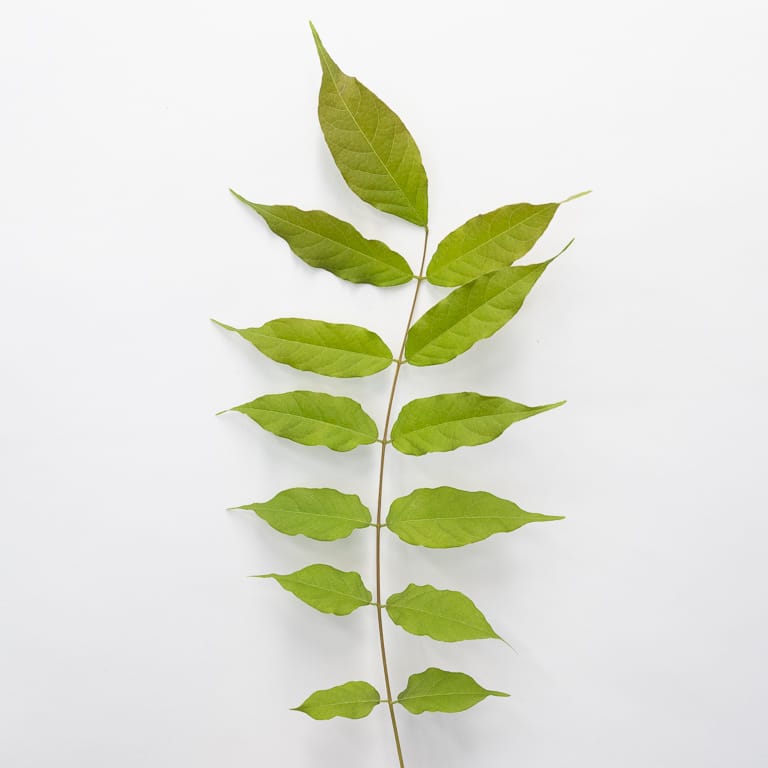
Pale green mature leaf
As you can see from the photos, the pinnately compound leaves are long and comprise thirteen leaflets. Long leaves aren’t typically great for bonsai but we forgive this on wisteria as they can provide such great flowers in spring.
The long leaves were, however, shading out some of the interior growth which was turning yellow and starting to fall away.
To ensure more sunlight reached the tree’s interior, I decided to prune the leaves. On a healthy wisteria, it’s safe to cut back to two leaflets. Because I wasn’t sure how the tree would respond, I kept between four to six leaflets on each leaf.
As I reached toward the tree to start cutting, I noticed a few ants crawling along the trunk. Ants make me suspicious, so I inspected the branches carefully and found what I’d suspected – some scale.

Scale
I plucked off the scale and started pruning. Along the way, I found and removed a few seed pods.
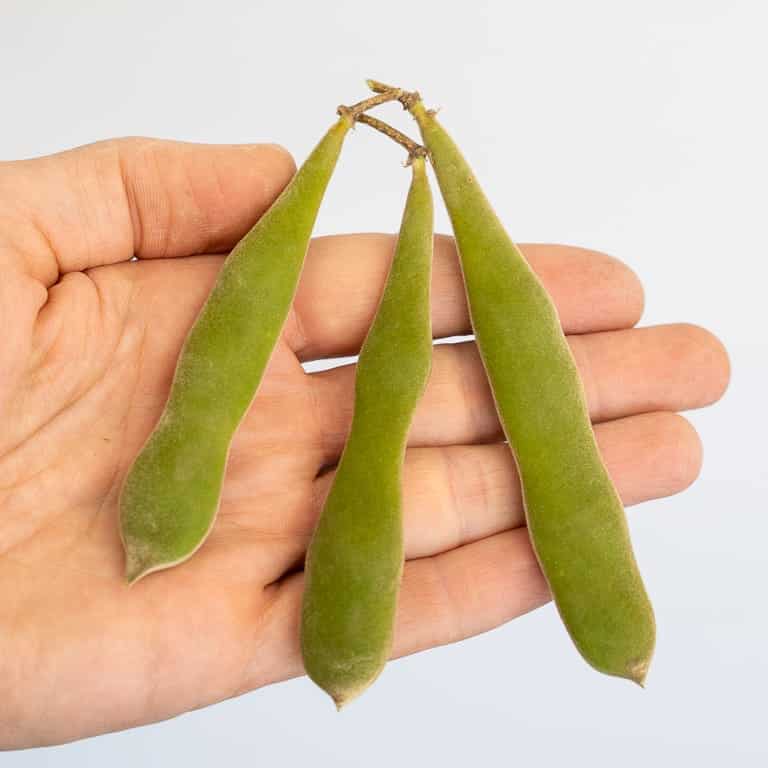
Seed pods
When I was done with the leaf pruning, I found I could appreciate the shape of the tree. The grower, a hobbyist who had worked on the tree for decades, had done a fantastic job of developing the trunk and branches.
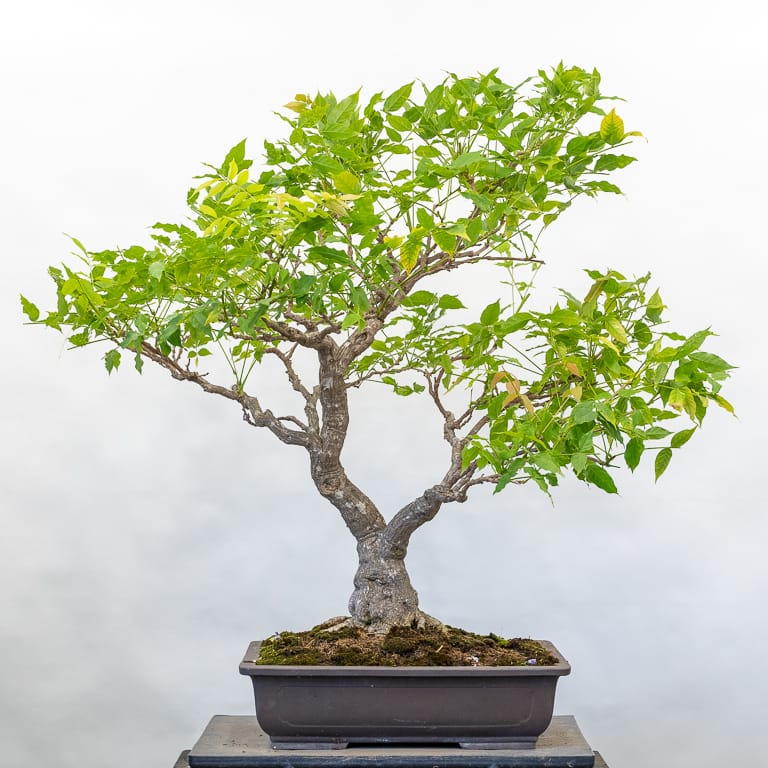
After cutback and leaf pruning
Taking a few steps back from the tree, I noticed that the tallest branch was somewhat long and slender compared with the others. I liked the silhouette, but thought that reducing the branch would allow for the development of more refined branching near the apex. I cut the branch.
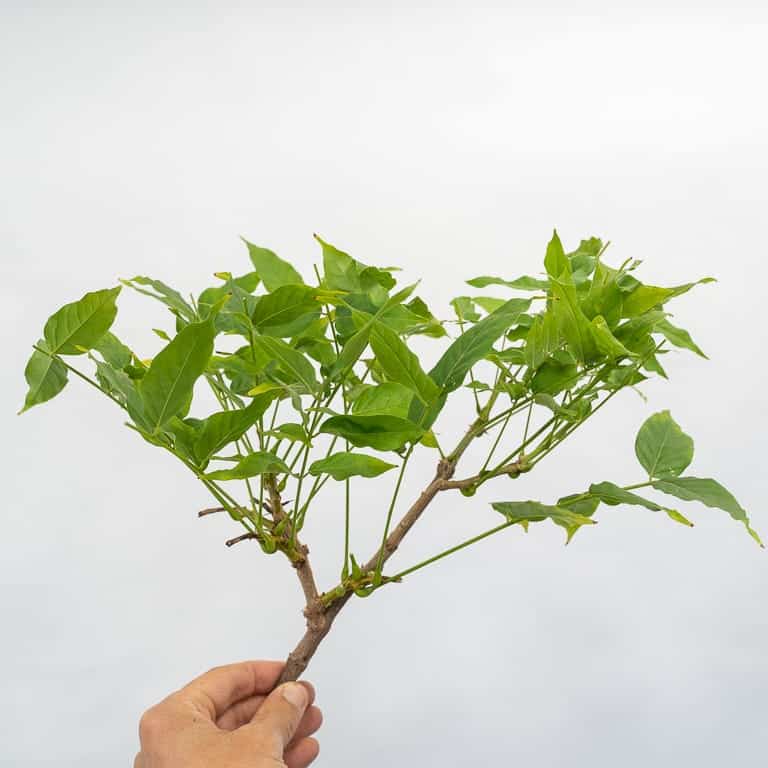
Cut branch
Here’s the tree after making the cut.
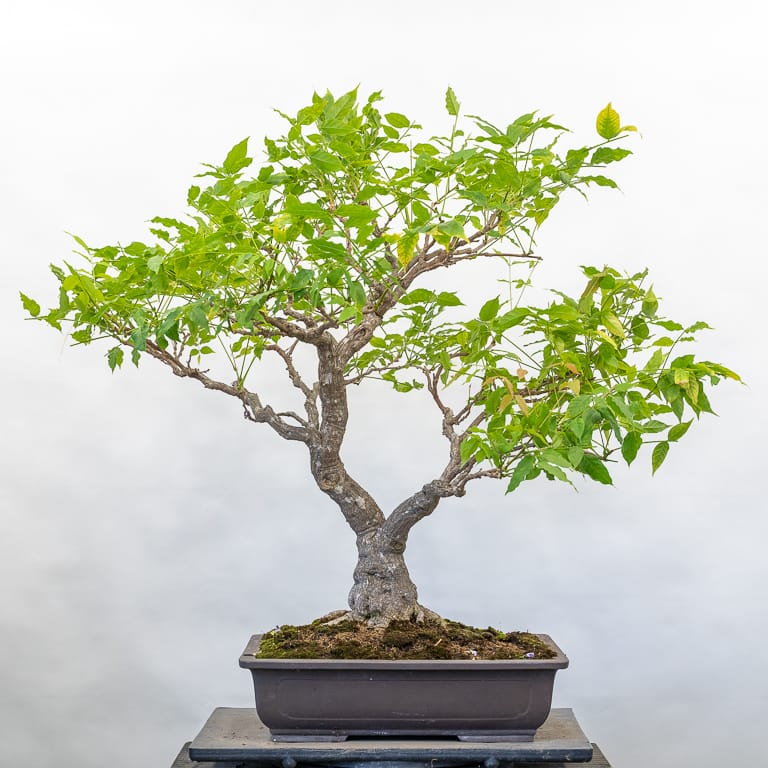
After minor cutback and leaf pruning – 33″ tall, 36″ wide
Within a week new buds had appeared and the tree is now preparing for a third summer bloom – I can’t wait! In the meantime, I’ll keep the tree in full sun, fertilize liberally, and provide as much water as the tree can drink, about four to five waterings a day at this point.
Redwood Empire Bonsai Society’s 36th Annual Bonsai Exhibit Opens Tomorrow
The Redwood Empire Bonsai Society is hosting their 36th annual exhibit this weekend, August 24-25, at the Santa Rosa Veterans Building in Santa Rosa, California. Hours are 10-5 Saturday and 10-4 Sunday.
For those who haven’t been, this is Northern California’s biggest bonsai event of the summer. Kathy Shaner will provide demos from 1-3 both days, and shoppers will enjoy the club sales, silent raffle and large vendor area.
I’ll be vending with a selection of tools, supplies, and trees, including a number of satsuki azalea bonsai – I hope to see you there!
Subscribe to Bonsai Tonight
New Posts Delivered Every Tuesday and Friday
Dawn says
Jonas, expecting a third bloom is great! Any secrets to getting Chinese Wisteria to repeat bloom, or is it a variety thing?
Jonas Dupuich says
Hi Dawn! No secrets that I know of other than lots of sunshine, fertilizer, and water. I think this tree is blooming now because it had been in the shade and recently moving it into the sun really kicked it into gear.
Ryan Huston says
Branch structure wise, that’s definitely one of the best wisteria I’ve ever seen! Most people don’t bother showing off wisteria branch structure and instead just focus on flowers. It’s good inspiration that this species can look good even when not in bloom!
Jonas Dupuich says
Thanks Ryan! I’m really looking forward to winter to better appreciate the branches – will be sure to share photos.